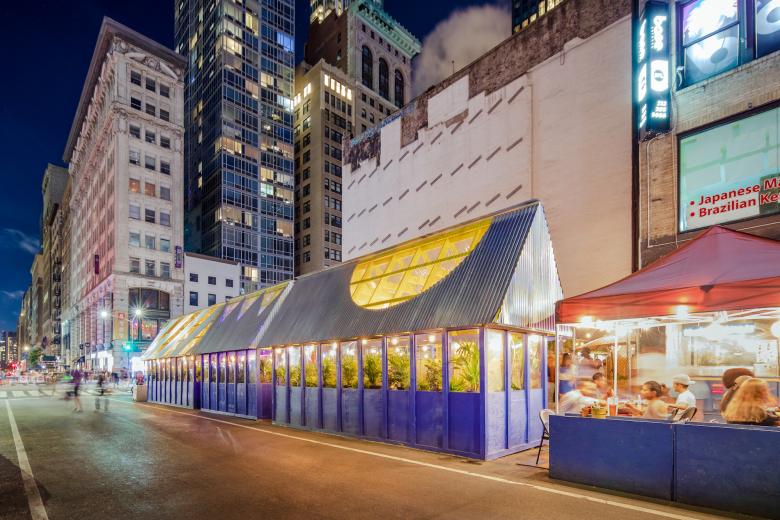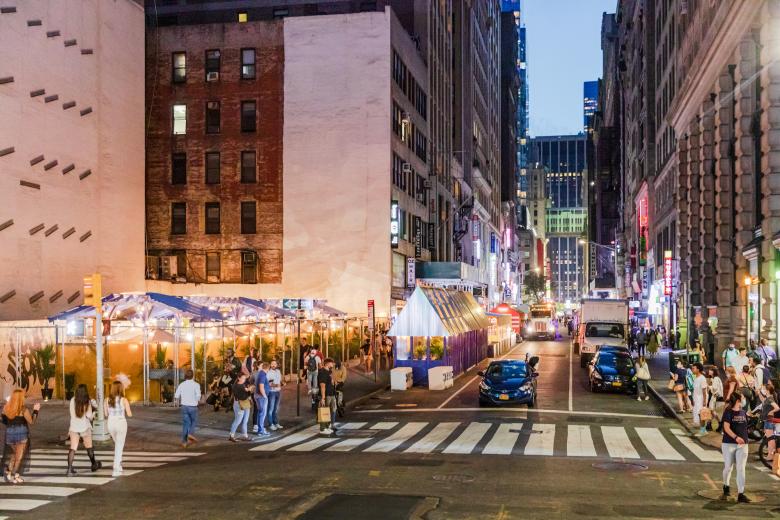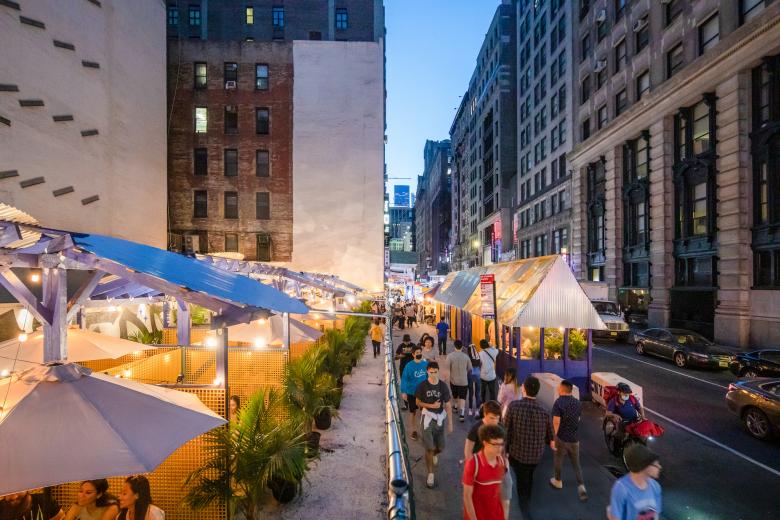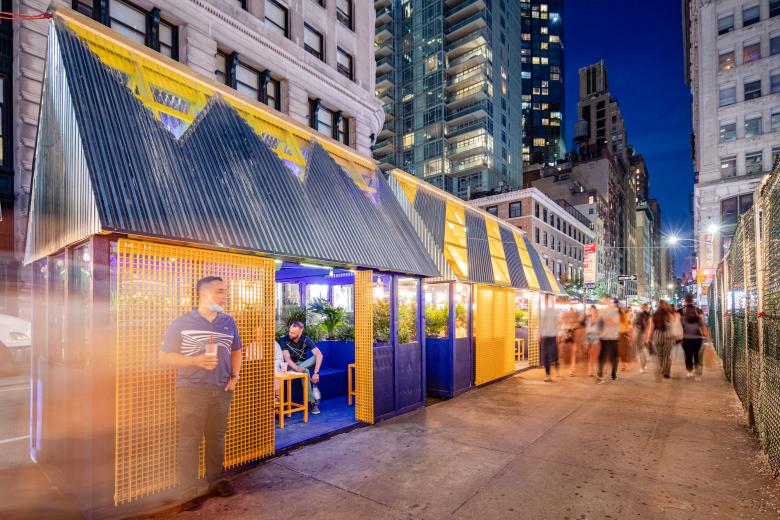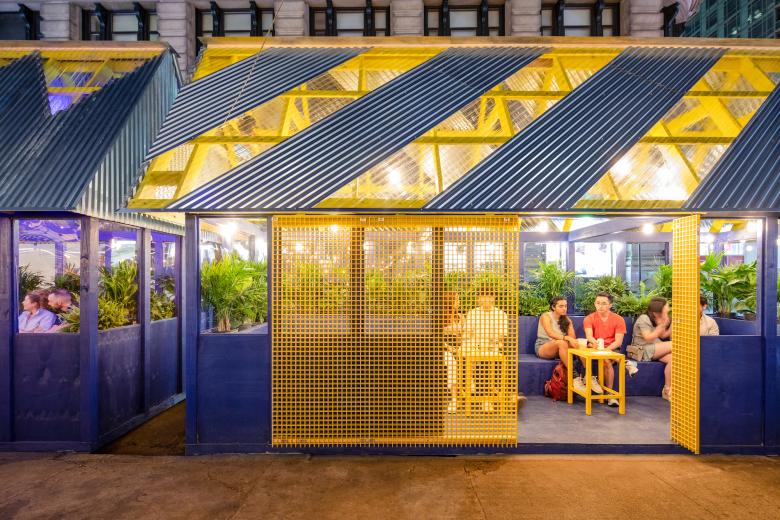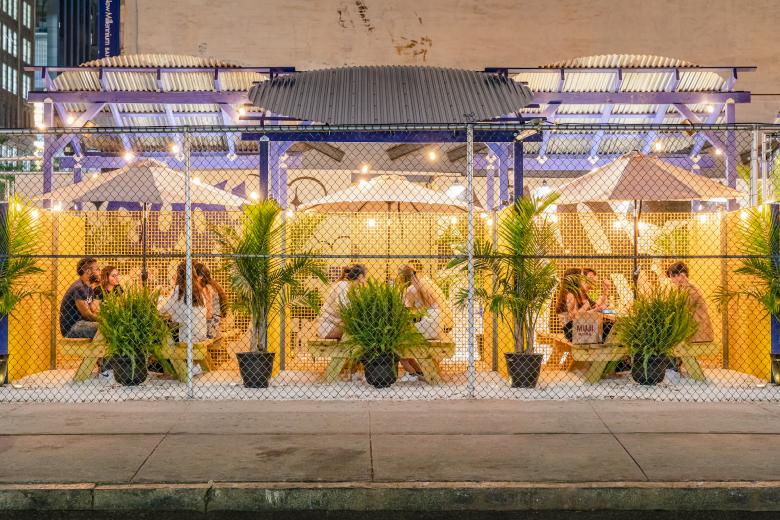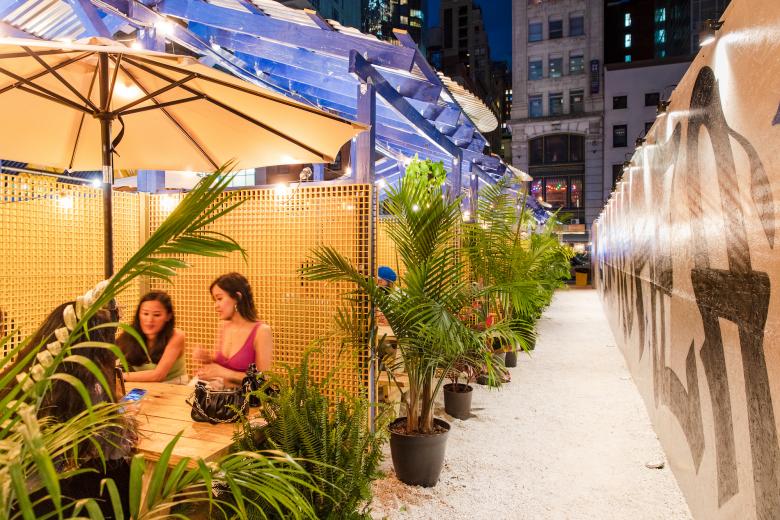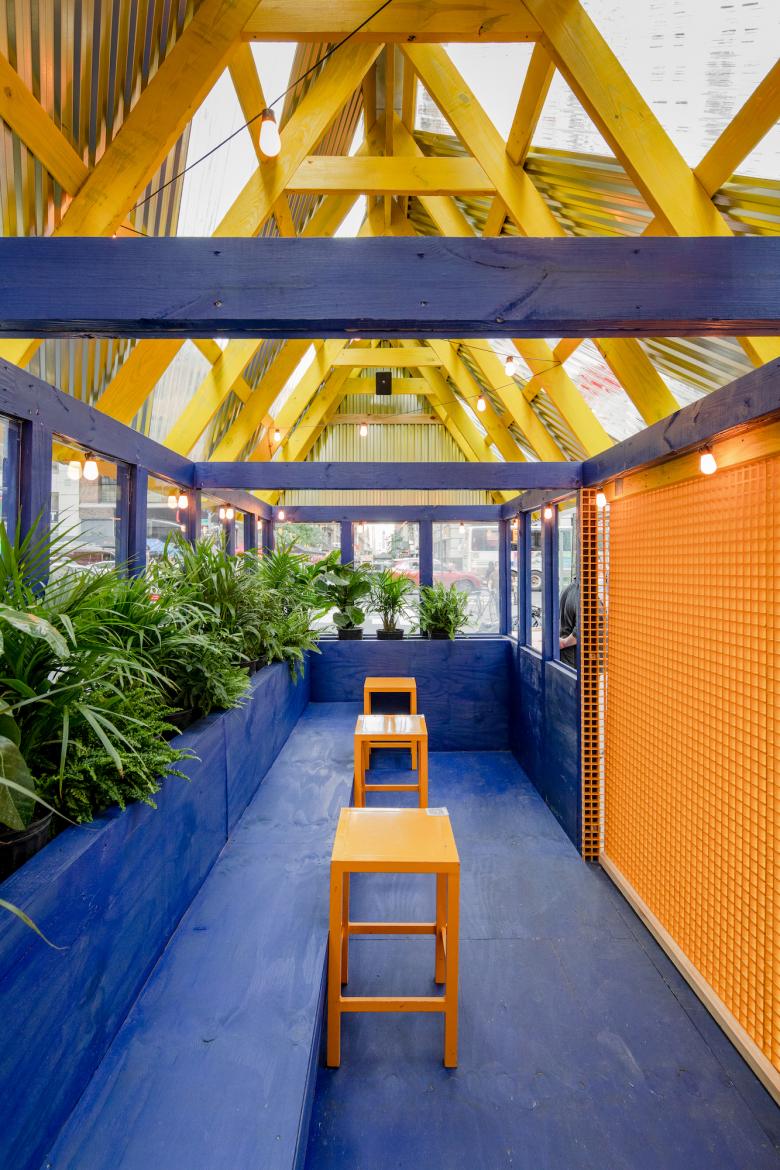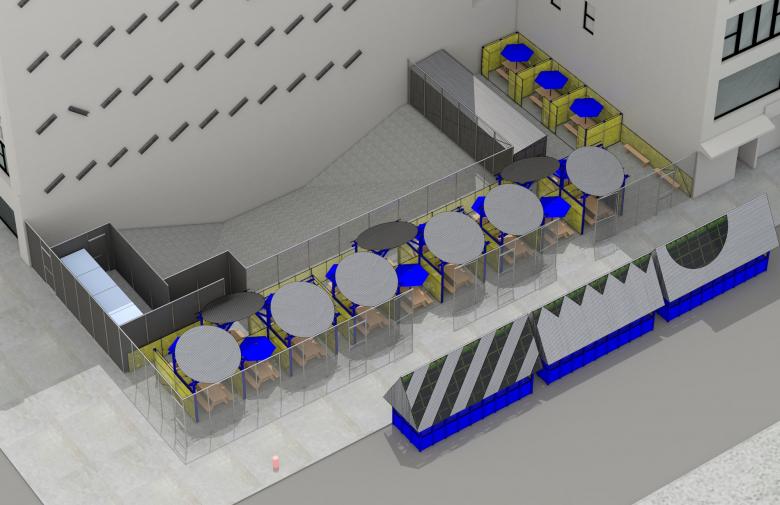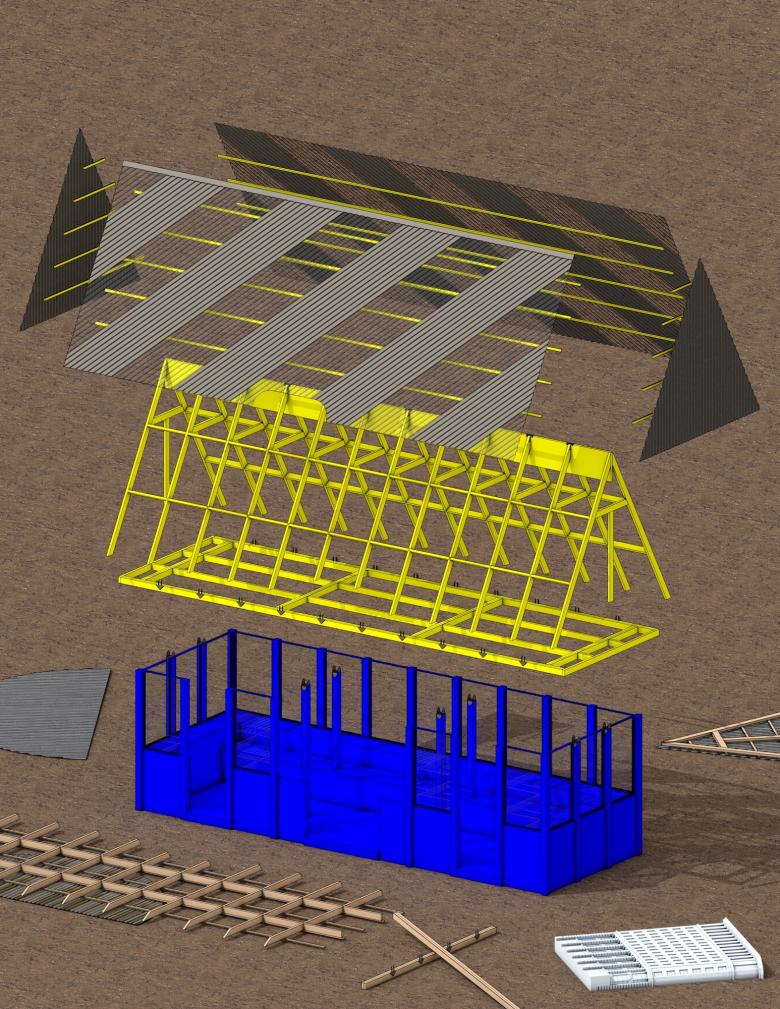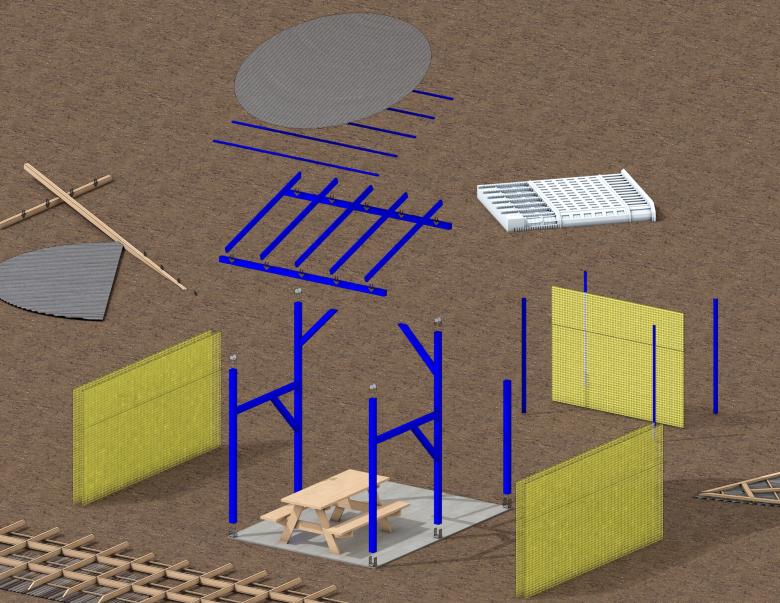US Building of the Week
Maiden Korea
Dash Marshall LLC
27. September 2021
Photo: Mark Wickens
In June 2020, in some of the worst days of the coronavirus pandemic, the Mayor of New York City executed the Open Restaurants Program, which enabled storefront restaurants to provide seating in shelters that occupy parking spaces next to the curb. Maiden Korea is an exceptional example of one such shelter, both for its design and the way it helps restaurants that don't have curb space to take advantage of. The architects at Dash Marshall answered a few questions about the project.
Location: Koreatown, NYC, USA
Client: Maiden Korea
Architect: Dash Marshall LLC
- Design Principal: Ritchie Yao
- Project Team: Amy Yang, Bryan Boyer
Lighting Designer: Dash Marshall LLC
Contractor: T&J Set Design and Fabrication
Site Area: 5,000 sf
Built Area: 1,630 sf
Photo: Mark Wickens
What were the circumstances of receiving the commission for this project?We worked with restaurateur Eddie Song prior to the pandemic: on a restaurant in Brooklyn and an unbuilt cafe proposal for Koreatown.
Photo: Mark Wickens
Please provide an overview of the project.After the year everyone just had, our goal was to create an outdoor dining hall as a space of optimism that blends futuristic elements with familiarity. The concept, developed with restaurateur Eddie Song, is a dining hall open to all of the restaurants of Koreatown, many of whom are on second or higher floors and do not have the ability to utilize the street-shed typology seen across NYC. Instead, customers can meet at Maiden Korea and order from whichever place they like, while enjoying drinks purchased on site via a digital ordering system.
Photo: Mark Wickens
What are the main ideas and inspirations influencing the design of the building?The architecture was designed with the spirit of Seoul’s Pojangmacha: tented street food stalls that emerged in postwar Seoul and were made with whatever materials were on hand. We used simple elements that could ship quickly amid the supply chain instability of 2021. Forms, patterns, and colors were chosen to evoke cheerfulness and comfort, like the pitched roof silhouette of our street sheds that match what a kid might draw.
Fiberglass gates and careful detailing maintain flow of light and air, still mindful of the fact that the pandemic is not over. Occupying the corner of Fifth Avenue and 32nd Street, we wanted the site to act as a gateway to Koreatown, which is why the street sheds take on a taller presence and feature strong graphic patterns on their roofs. On the adjacent lot, a line of UFO-like gazebos are tucked between vegetation, again balancing the familiar and the futuristic.
Photo: Mark Wickens
How does the design respond to the unique qualities of the site?The design activates a vacant land at the entrance to Koreatown. The site was a vacant 5,000-square-foot lot that was supposed to have been developed as a luxury condominium high rise, but the condominium was put on hold indefinitely during the pandemic. Although the site is zoned as high-rise residential and does not allow it to be used as an outdoor eatery, working creatively with the city’s building department, sanitation department, and local City Councilor’s office, the project secured a temporary-use permit to allow for the out-of-zoning use of the site.
Photo: Mark Wickens
How did the project change between the initial design stage and the completion of the building?Because the vacant lot was originally zoned residential and we had to obtain a temporary permit for the uses, any structures had to be only 400-sf or less. Our solution was to create a modular design and separate the sheds into smaller units.
During the construction of the project we had a perfect storm hit us: a tanker ship blocked the Suez Canal for a week, and easing the Covid lockdown in the US meant there was a surge in raw materials as the economy started up. This meant that we had to adapt our material selection to what was readily available and cheap, leading to the fiberglass grating and corrugated metal. A winter storm that hit the Southern States (i.e., the Texas winter storm) also hurt a lot of plant nurseries at the time, so we had to be creative in sourcing the plants.
Photo: Mark Wickens
Was the project influenced by any trends in energy-conservation, construction, or design?The roof design of the street sheds addresses the balance between welcoming natural light and not overheating guests by using opaque panels of corrugated metal that have translucent polycarbonate cutouts that let in sunlight. The geometric roof cutouts — like circles and triangles — make graphic patterns that elevate familiar construction materials and give the project a strong presence when lit up at night. From inside, diners can look up through the semicircle roof cutout and see the top of the Empire State Building. The openings in the overhang and top ridge of the roof allow for constant air flow.
Email interview conducted by John Hill.
